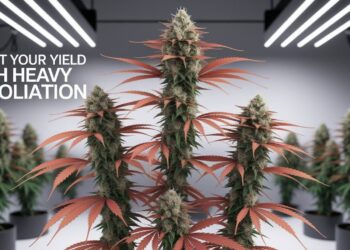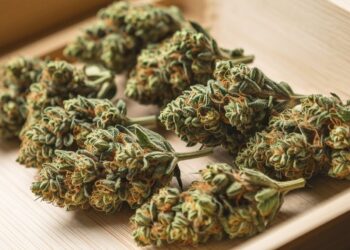Choosing between autoflower seeds vs feminized stumped me for months when I started growing. I wasted money on the wrong seeds twice before understanding the real differences.
This choice affects everything: your harvest size, growing timeline, and how much work you’ll put in daily. Pick wrong and you might wait months for disappointing results.
After growing both types for five years, I’ve learned exactly when each seed type works best. I’ll share the practical differences that matter for your growth.
You’ll learn what autoflower and feminized seeds are, how they grow differently, and which fits your specific situation. This guide covers the 8-12 week autoflower timeline versus the 12-20 week feminized cycle, space requirements, yield expectations, and cost comparisons.
These two seed types grow completely differently. Autoflower seeds contain ruderalis genetics that flower automatically after 2-4 weeks. Feminized seeds produce 99% female plants but need specific light schedules. Understanding this upfront saves expensive mistakes.
Growth Characteristics and Plant Structure
1. Physical Plant Differences
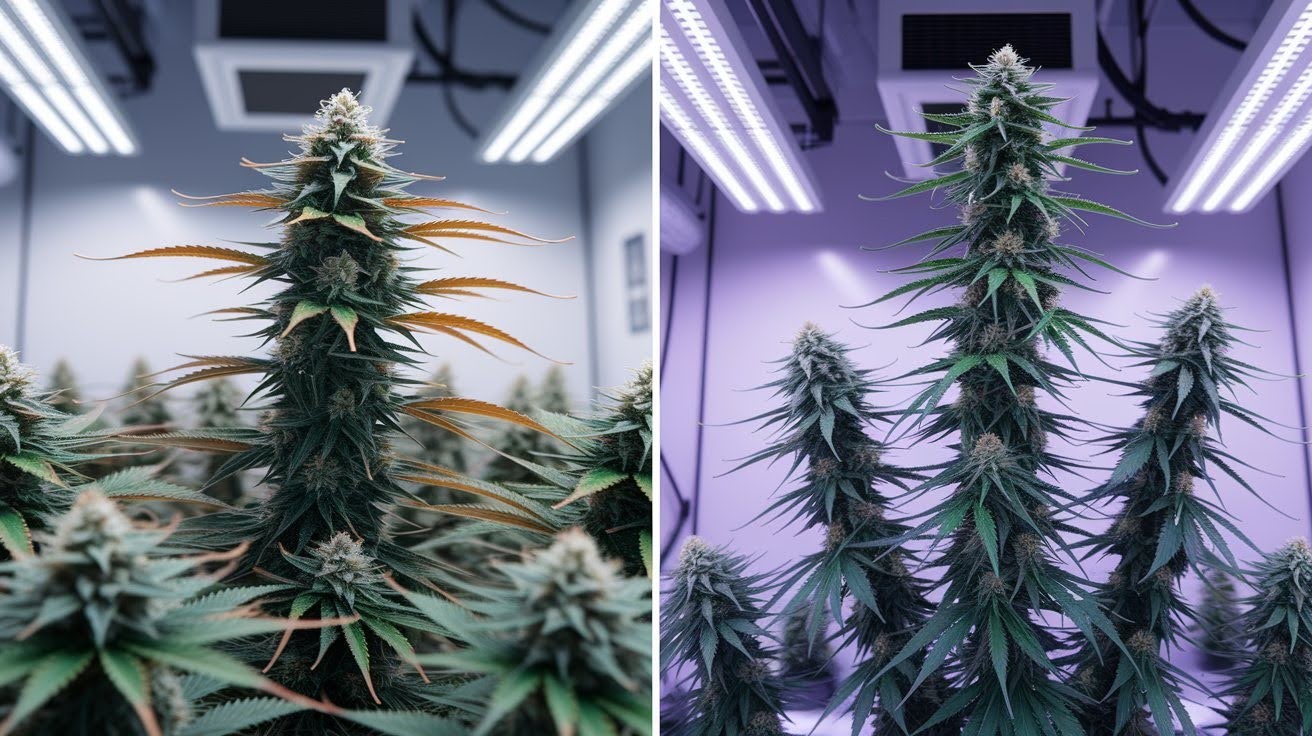
The first thing you’ll notice is the size difference. It’s dramatic.
My autoflower plants rarely grow taller than 3 feet. Feminized plants can easily hit 6 feet or more. I learned this the hard way when my feminized White Widow outgrew my grow tent.
Autoflower plants stay compact and bushy. Think Christmas tree shape, but shorter. Feminized plants stretch tall with longer branches that reach for light.
This size difference changes everything about your grow setup.
If you’re growing in a closet or small tent, autoflowers fit perfectly. You don’t need a massive ceiling height or worry about plants touching your lights.
Feminized plants need room to stretch. I’ve seen growers struggle with 8-foot plants in 7-foot rooms. Not a fun problem to solve mid-grow.
Outdoor growers love autoflowers for stealth. Your neighbors won’t spot a 3-foot plant behind other garden plants. A 6-foot cannabis plant is hard to hide.
The leaf patterns tell a different story, too.
Autoflowers grow thick, bushy foliage. Lots of leaves are packed close together. This creates dense canopies that can block light from reaching lower branches.
Feminized plants have fewer but larger leaves. The spacing is better. More light reaches the bud sites naturally.
This affects your trimming work at harvest time. Autoflowers require more leaf removal. Feminized plants often have better bud-to-leaf ratios right from the start.
Root systems match the plant sizes.
My autoflowers thrive in 3-gallon pots. Sometimes, even 1-gallon containers work fine. The root systems stay compact and manageable.
Feminized plants demand bigger containers. I use 5-gallon minimum, often 7-gallon pots for outdoor grows. Bigger roots mean bigger plants and bigger yields.
2. Flowering and Bud Development
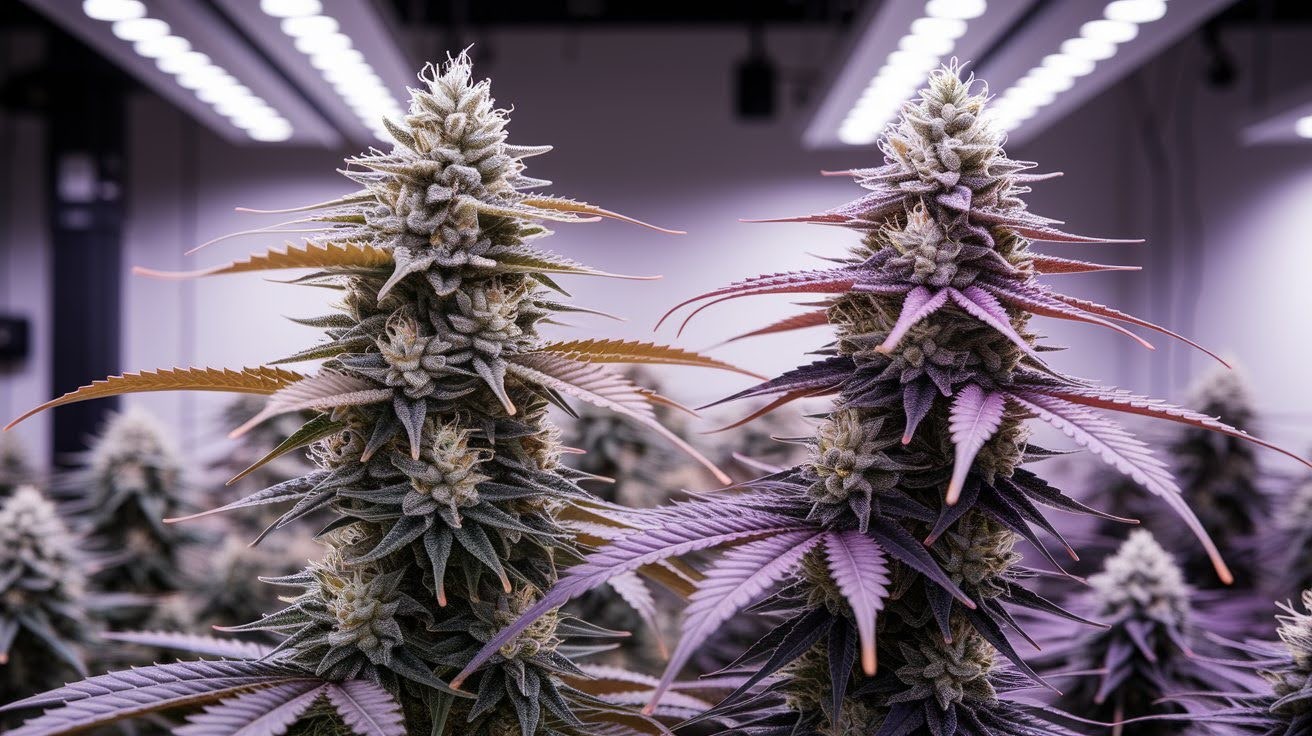
The bud differences hit you immediately at harvest time.
My first autoflower harvest taught me this lesson. I expected massive colas like my feminized plants. Instead, I got smaller but dense buds scattered across the plant.
Autoflowers produce fewer bud sites overall. But each site develops thick, compact flowers. Feminized plants create more bud sites that grow into larger individual colas.
Here’s where resin production differs.
Autoflowers produce fewer visible trichomes. The buds look less frosty under magnification. This means lower overall cannabinoid content.
Feminized plants often drip with resin. The trichome coverage is more complete and dense. You can see the difference with your naked eye.
Modern autoflowers have surprised me, though. Some recent strains hit 20%+ THC levels. That’s getting close to feminized territory.
Still, feminized plants typically win the potency contest. I’ve harvested feminized buds testing over 25% THC regularly. Autoflowers rarely hit those peaks.
The flavor differences are subtle but real. Autoflower terpene profiles tend to be milder. The smells and tastes are present but not as intense.
Feminized plants often have more complex terpene profiles. The flavors hit harder. The aromas fill the room more completely.
The trade-off is speed versus strength. Autoflowers get you smoking faster with decent quality. Feminized plants make you wait longer but reward patience with superior buds.
Advanced Growing Techniques and Limitations
1. Training and Shaping Methods
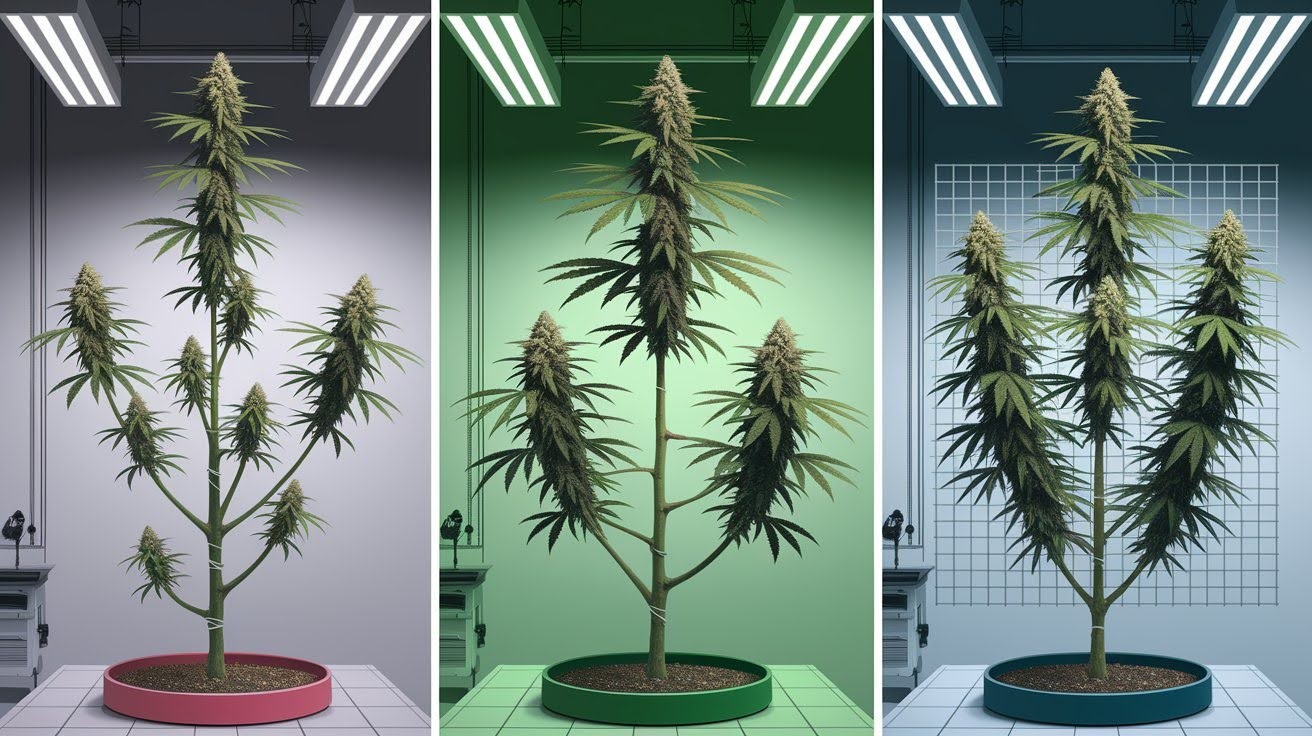
Training autoflowers nearly killed my first grow.
I topped three autoflowers at week 4 and watched them struggle for the rest of their short lives. Autoflowers have zero patience for recovery time.
Here’s what works:
Low-stress training is your only safe option. Gently bend branches with soft plant ties. Never snap or break anything.
I start LST around week 2 when stems are flexible. Slowly bend the main stem sideways to open up the lower branches. This lets more light reach bud sites without shocking the plant.
Topping autoflowers is gambling with your harvest. I’ve done it successfully exactly twice on super healthy plants in week 2 maximum. Wait any longer and you’ll stunt growth permanently.
The plant spends the remaining energy trying to recover instead of making buds. I’ve seen autoflowers produce half their potential yield because of late topping.
The Sea of Green method works perfectly, though. Pack many small plants close together in small pots. Let them grow naturally without training.
Their compact size fits this method perfectly. You get multiple small harvests instead of one large harvest.
The key rule: Keep it simple and gentle. Any technique that damages the plant will cost you yield. These plants don’t have time to forgive mistakes.
2. Feminized Plant Training Options
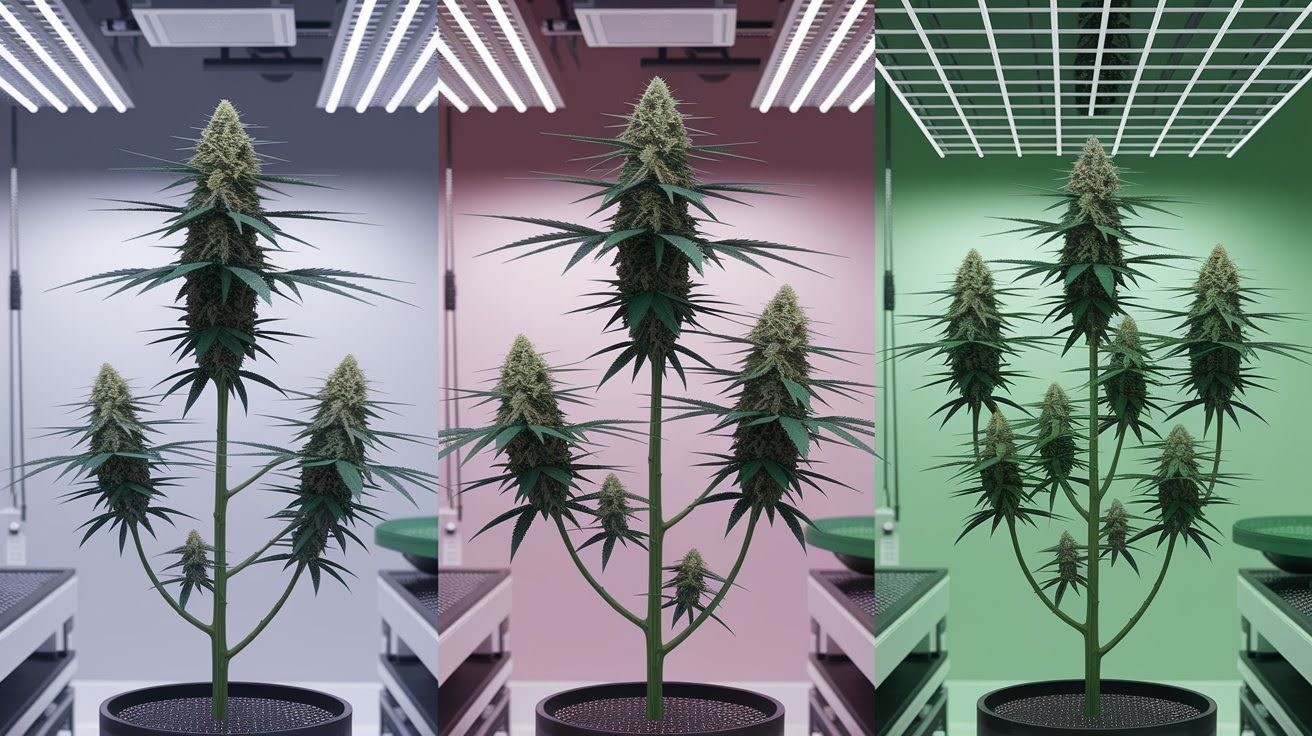
Feminized plants are like patient students. You can teach them any trick and they’ll learn.
I’ve topped, finned, super-cropped, and SCROG’d the same feminized plant multiple times. It just keeps growing stronger.
The extended vegetative period is your playground. Make a mistake? No problem. Wait two weeks, and the plant recovers completely.
Here’s what you can do with feminized plants:
Topping works beautifully. Cut the main stem above the 4th or 5th node. Two new main colas grow from that cut. I’ve topped plants 3-4 times to create 8+ main branches.
Fimming is even gentler. Instead of cutting cleanly, you pinch off most of the growing tip. This creates 3-4 new growth points instead of just two.
Super cropping sounds scary, but it’s not. Gently squeeze and bend branches until they fold over. The plant heals stronger at that bend point. I use this to control height and create more bud sites.
SCROG screens turn one plant into a canopy of colas.
I install a screen about 8 inches above my plants during vegetative growth. As branches grow through the holes, I weave them horizontally. This creates an even field of growing tips.
The magic happens over weeks of training. Each branch tip becomes a main cola. Instead of one big bud, you get 20+ medium-sized colas.
Multiple training sessions are normal. I might top a plant in week 3, add LST in week 5, install SCROG in week 7, and do final defoliation in week 9.
Feminized plants actually like this attention. Each training session makes them bushier and more productive. Think of it as building muscle through exercise.
3. Pruning and Defoliation Approaches
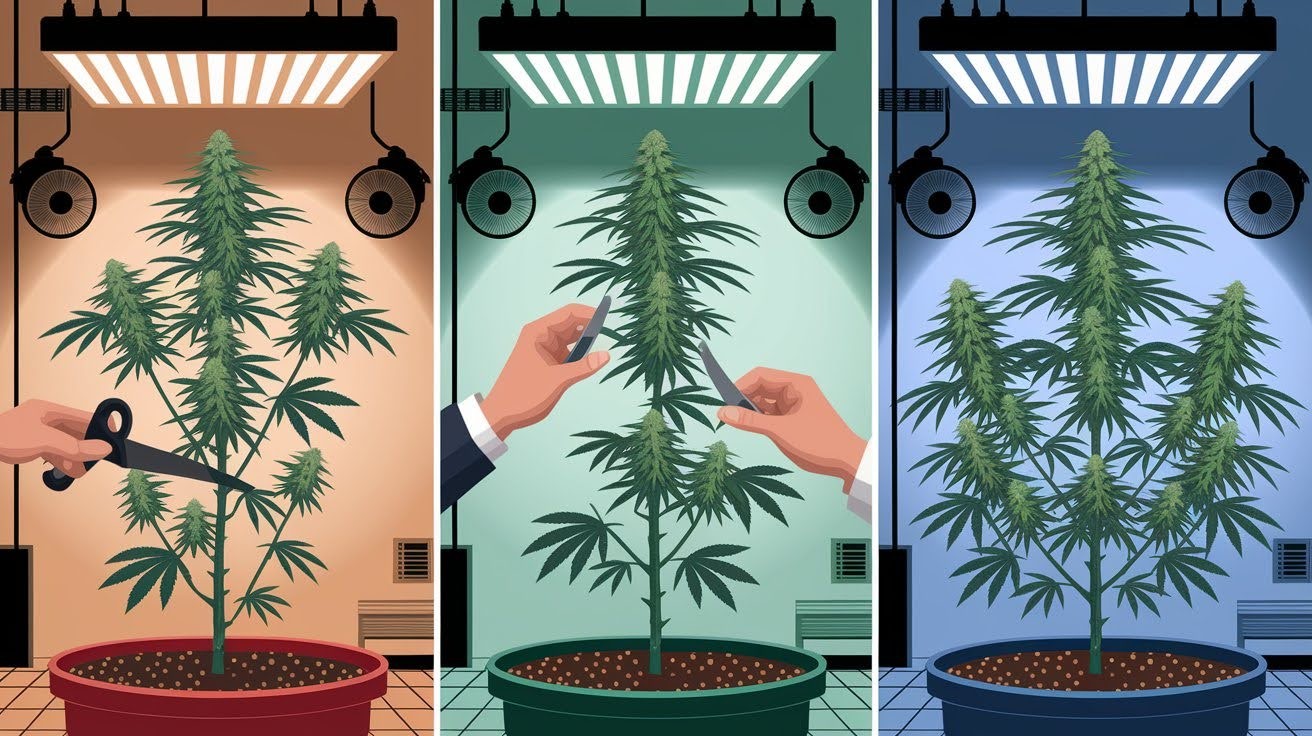
I killed an autoflower with scissors once.
Well, almost killed it. I removed about 40% of the leaves, thinking it would help with light penetration. The plant never recovered. It limped to harvest with tiny, disappointing buds.
Autoflowers hate aggressive pruning. Their short timeline means no recovery time from major stress.
Here’s my autoflower pruning rule: Only remove what’s necessary. Dead leaves, obviously diseased growth, or leaves completely blocking bud sites.
Even then, I wait until week 2-3 maximum. Any pruning after week 3 risks stunting the plant permanently.
I learned to work around dense foliage instead of cutting it. Tuck leaves behind branches. Bend them out of the way gently. This preserves the plant’s energy while still opening up bud sites.
Feminized plants are completely different animals.
I regularly remove 30-50% of their leaves during vegetative growth. They bounce back stronger within days. It’s like they enjoy the haircut.
Heavy defoliation works great on feminized plants. Strip away all the fan leaves blocking lower bud sites. The plant redirects energy into bud production. Timing makes all the difference, though.
For autoflowers: Only light pruning in weeks 2-3, then hands off completely. For feminized plants: Aggressive pruning anytime during vegetative growth, light pruning early in flower.
Recovery time tells the whole story. Autoflowers need 5-7 days to recover from even light pruning. In their short 8-12 week lifecycle, that’s a huge chunk of time lost.
Feminized plants recover from major pruning in 3-5 days. Since they have months of vegetative time available, this recovery period doesn’t hurt final yields.
My current approach: Treat autoflowers like delicate flowers. Treat feminized plants like they can handle whatever you throw at them.
4. Propagation and Breeding
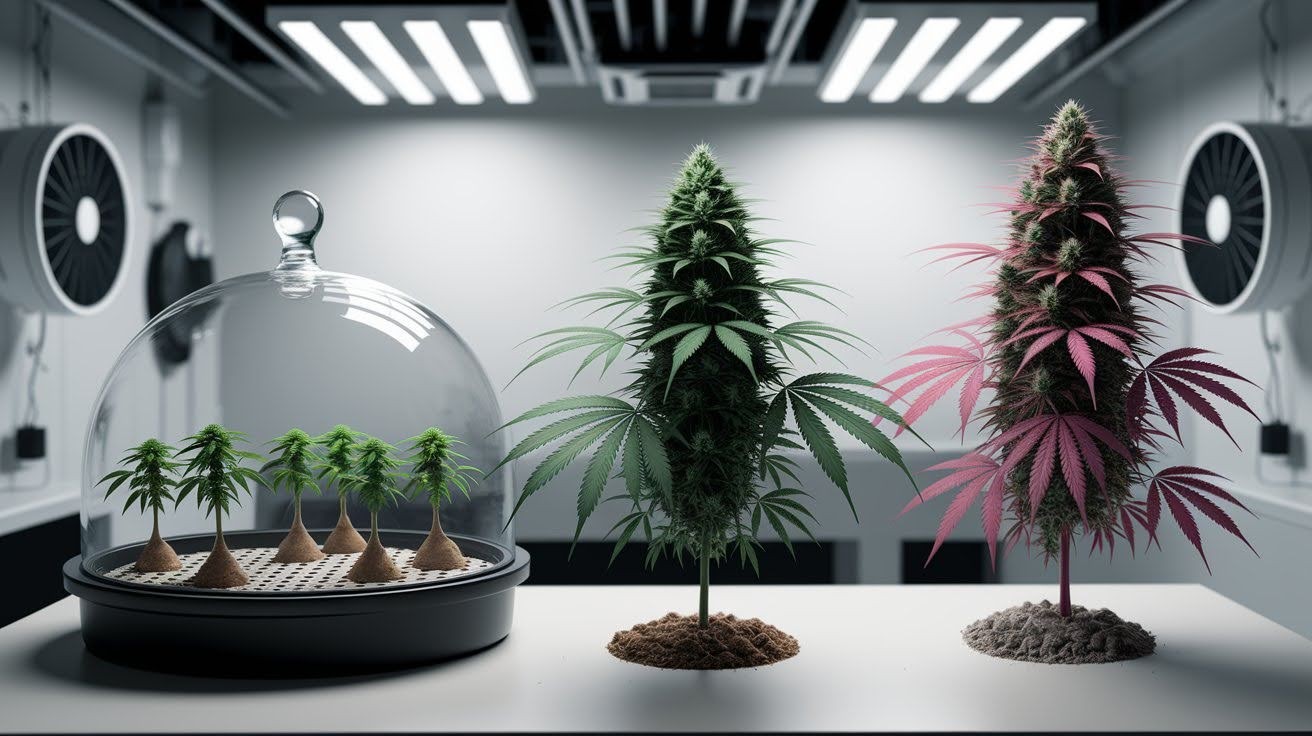
I wasted weeks trying to clone an autoflower.
Took perfect cuttings, used rooting hormone, and maintained ideal humidity. The clones rooted but immediately started flowering. They produced tiny buds the size of popcorn kernels.
Autoflowers cannot be cloned successfully. Even if the cutting roots, it carries the same internal clock as the mother plant. By the time it establishes roots, flowering has already begun.
There’s no vegetative growth period to develop size. You end up with miniature plants that flower immediately. Complete waste of time and space.
Feminized plants are cloning champions.
I keep mother plants in vegetative growth for months. Take cuttings whenever I need new plants. Each cutting becomes an exact genetic copy of the mother.
This saves massive amounts of money. Instead of buying new seeds every grow, I clone my favorite plants indefinitely. One great mother plant can produce hundreds of clones.
The genetics stay perfectly preserved, too. That amazing phenotype with perfect flavor and potency? Clone it and you’ll have the same quality forever.
Here’s my cloning setup:
Take 6-inch cuttings from healthy branches. Dip in rooting hormone and place them in the rockwool cubes. Keep humidity at 80% and provide gentle light.
Roots appear in 7-14 days. The clones can then be transplanted and grown just like seed plants.
Feminized mother plants can live for years. I’ve had the same mother plant providing clones for 18 months. She’s like a genetic goldmine that keeps producing.
With autoflowers, you’re buying seeds every single grow. No exceptions. With feminized plants, buy seeds once and clone forever.
The cost difference adds up quickly. Autoflower seeds cost $10-15 each. One feminized mother plant can replace hundreds of seed purchases.
Common Problems and Drawbacks
1. Autoflower Specific Challenges
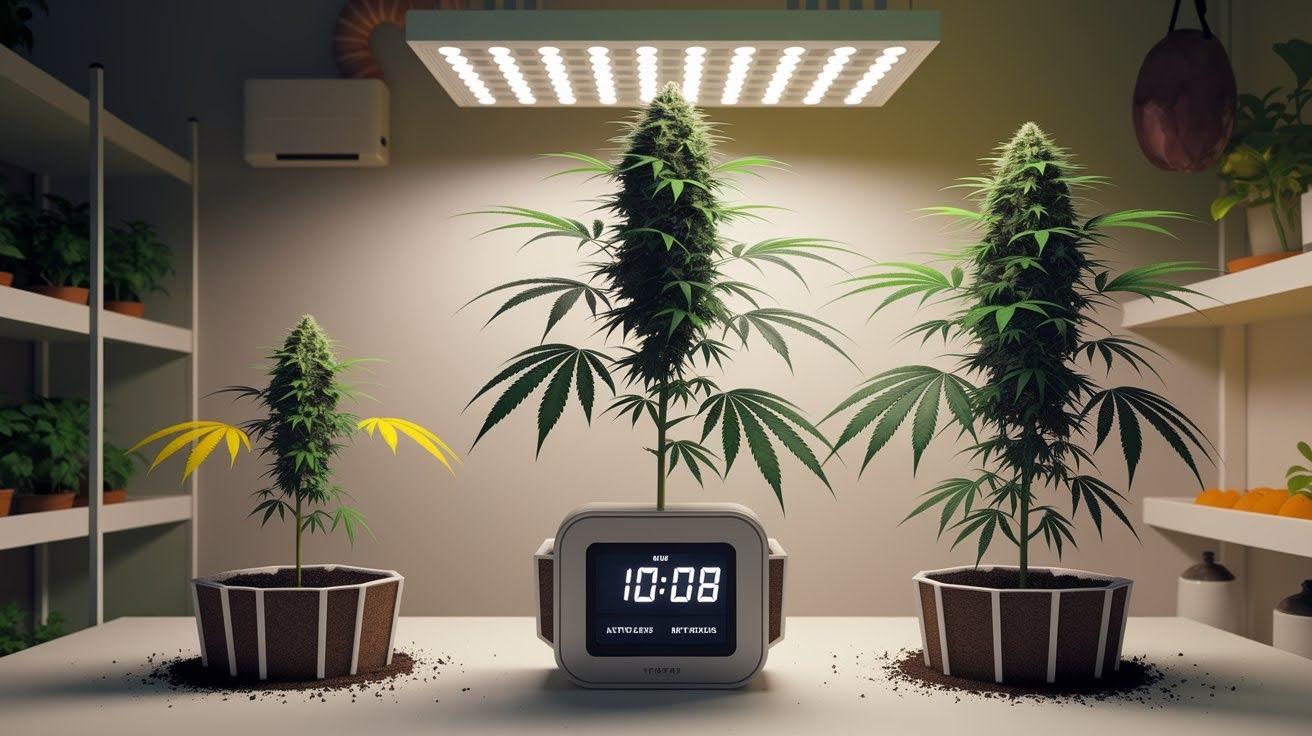
Let me be honest about autoflowers. They’re not perfect. I’ve learned their limitations the hard way. The yield disappointment hits first. My best autoflower harvest was 2 ounces per plant. My feminized plants regularly produce 4-6 ounces each.
THC levels tell a similar story. Most autoflowers test 15-18% THC. My feminized plants often hit 22-25%. The flavor difference is real, too. Autoflower terpenes seem muted compared to feminized plants. Less smell, less taste, less punch.
Genetic variety is limited as well. Maybe 50 autoflower strains versus 500+ feminized varieties at most seed shops. Here’s what frustrates me about autoflowers:
Zero flexibility once they start growing. Make a mistake in week 2? Too bad. The plant won’t have time to recover properly.
I accidentally overwatered an autoflower early on. It stunted and never reached its full potential. A feminized plant would have bounced back in a week.
You can’t extend the vegetative phase either. Want a bigger plant? Tough luck. Autoflowering flowers when they want to.
Cloning is impossible. Found an amazing phenotype? You can’t keep it. Once that plant is gone, it’s gone forever. The money adds up quickly,y too.
Every grow requires new seeds. At $10-15 per seed, that’s $100-150 for a 10-plant grow. Every single time. Feminized growers buy seeds once. Then clone forever. I know growers who haven’t bought seeds in years.
2. Feminized Plant Drawbacks
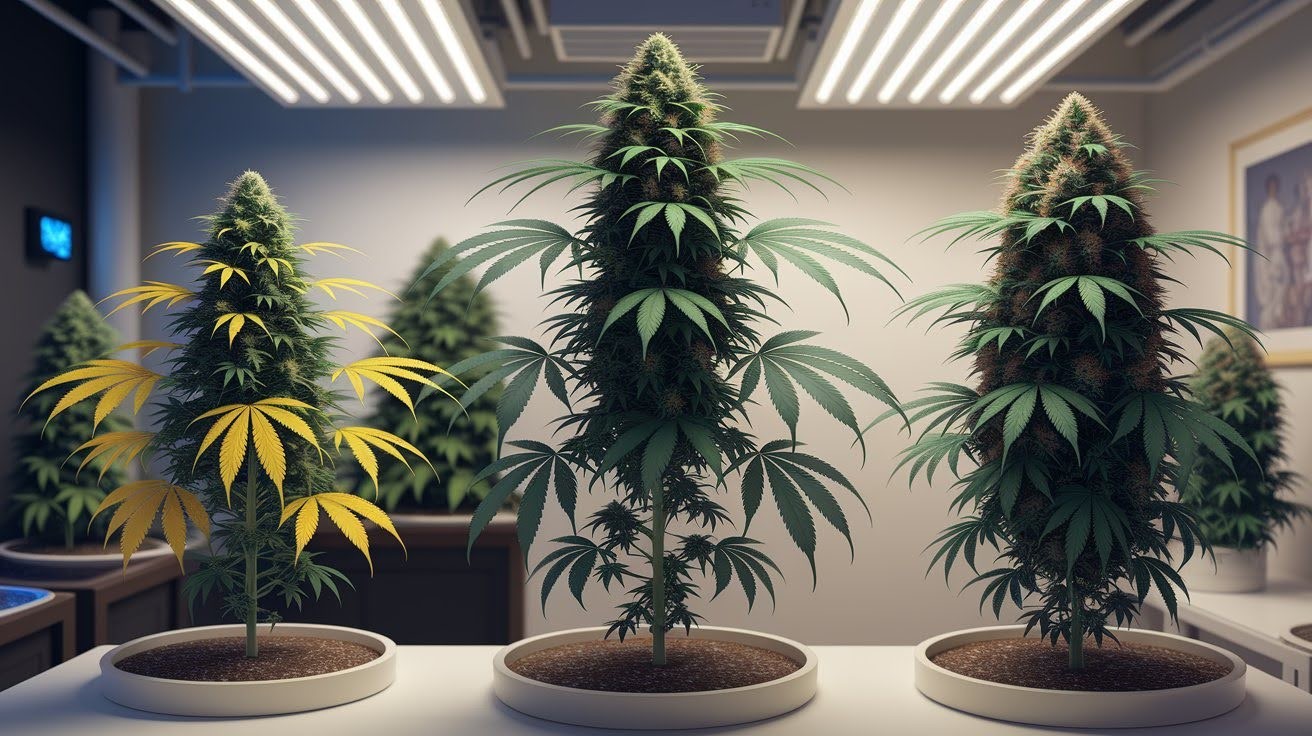
Feminized plants have their headaches, though. The light schedule becomes your master. Miss the 12/12 timing and your plants won’t flower properly. Get a light leak and they might re-veg.
I once had a tiny LED indicator light disrupt my entire flowering room. Three plants went hermaphrodite because of that pinpoint of light.
The feeding demands are intense. Autoflowers are happy with basic nutrients. Feminized plants want specific feeding schedules throughout their long lifecycle.
Hermaphrodites are a real threat. Stress a feminized plant too much, and it grows male parts. Your entire crop can get pollinated. Space becomes a major issue quickly.
These plants get huge. I’ve had feminized plants outgrow 8-foot ceilings. Container size matters, too anything smaller than 5 gallons limits growth.
The time commitment is massive. 4-5 months from seed to harvest. Outdoor growers get one shot per year, mess up,p mess upand you wait until next season.
Environmental problems hit harder. Longer lifecycles mean more chances for pests and diseases. Spider mites love feminized plants because they have months to establish colonies.
Weather dependency outdoors is brutal. Early frost can destroy months of work. Electricity costs add up over 4-5 months, to my power bill doubles during feminized growth.
Conclusion
The autoflower seeds vs feminized decision comes down to your priorities and growing situation. Autoflowers offer speed and simplicity, perfect for beginners or quick harvests. Feminized plants deliver bigger yields and higher potency but demand more time and skill.
You now have the knowledge to choose confidently based on your space, experience level, and goals. Remember: there’s no wrong choice, just different paths to successful harvests.
Start with what matches your current situation. Many growers eventually try both types to see which fits their style better.
What’s your growing experience been like? Drop a comment below sharing which seed type worked best for you. Your insights could help fellow growers make better decisions.
Happy growing, and may your harvests exceed expectations.
Frequently Asked Questions
What is the main difference between autoflower seeds vs feminized seeds?
Autoflower seeds flower automatically after 2-4 weeks, regardless of light schedule, completing their lifecycle in 8-12 weeks. Feminized seeds are bred to produce 99% female plants but require specific light cycles (12/12) to trigger flowering and take 12-20 weeks total.
Which produces higher yields, autoflower or feminized seeds?
Feminized plants typically produce larger yields, often 4-6 ounces per plant, compared to autoflowers’ 1-3 ounces. Feminized plants grow bigger and have longer development time, while autoflowers stay compact but offer multiple harvests per year.
Are autoflower seeds better for beginners than feminized seeds?
Yes, autoflowers are generally more beginner-friendly. They require no light schedule management, are more stress-resistant, and have shorter lifecycles for quicker learning. However, they offer less forgiveness for mistakes due to their rapid growth timeline.
Can you clone autoflower plants like feminized plants?
No, autoflower plants cannot be successfully cloned. Even if cuttings root, they immediately start flowering due to their internal clock, producing tiny yields. Feminized plants excel at cloning and can maintain mother plants indefinitely.
Which is more cost-effective long-term,autoflower seeds vs feminized?
Feminized seeds are more cost-effective long-term. You can clone them indefinitely after buying seeds once, while autoflowers require purchasing new seeds every grow cycle at $10-15 each, making ongoing costs significantly higher.



